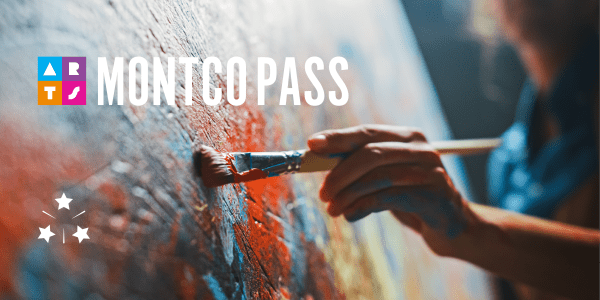How this Pass Works

Step 1 - Get Your Pass
This mobile exclusive passport is a collection of museums, parks, and historical homes to explore in Valley Forge, PA.

Step 2 - Receive Text
Your passport will be instantly delivered to your phone via text and email and is ready to use immediately! There is no app to download. Your pass can be saved to your phone’s home screen for easy one-tap access.

Step 3 - Redeem
When visiting a participating business, simply ensure your locations services is turned on to check-in via GPS and count towards your prize.
Arts Montco Pass
- Explore Montgomery County’s Arts & Culture scene
- Mobile exclusive
- Instantly delivered via text and email
- No apps to download
Free
How this Pass Works

Step 1 - Get Your Pass
This mobile exclusive passport is a collection of curated museums, art galleries and more for you to explore throughout Montgomery County!

Step 2 - Receive Text
Your passport will be instantly delivered to your phone via text and email and is ready to use immediately! There is no app to download. Your pass can be saved to your phone’s home screen for easy one-tap access.

Step 3 - Redeem
When visiting a participating business, simply ensure your phone locations services are turned on to check-in via GPS and count towards your prize!
Montco Makers Passport
- Mobile exclusive
- Instantly delivered via text and email
- No apps to download
Free
How this Pass Works

Step 1 - Get Your Pass
This mobile exclusive passport is a collection of breweries, wineries and distilleries in Valley Forge.

Step 2 - Receive Text
Your passport will be instantly delivered to your phone via text and email and is ready to use immediately! There is no app to download. Your pass can be saved to your phone’s home screen for easy one-tap access.

Step 3 - Redeem
When visiting a participating business, simply ensure your phone location services are turned on to check-in via GPS and count towards your prize!
How this Pass Works

Step 1 - Get Your Pass
This mobile exclusive passport is a collection of curated attractions, retailers, restaurants and more and offering deals and discounts to redeem during your visit.

Step 2 - Receive Text
Your passport will be instantly delivered to your phone via text and email and is ready to use immediately! There is no app to download. Your pass can be saved to your phone’s home screen for easy one-tap access.

Step 3 - Redeem
When visiting a participating business, simply present your phone to the attendant or staff member to redeem available discounts.
How this Pass Works

Step 1 - Get Your Pass
This mobile exclusive passport is a collection of museums, parks, and historical homes to explore in Valley Forge, PA.

Step 2 - Receive Text
Your passport will be instantly delivered to your phone via text and email and is ready to use immediately! There is no app to download. Your pass can be saved to your phone’s home screen for easy one-tap access.

Step 3 - Redeem
When visiting a participating business, simply ensure your locations services is turned on to check-in via GPS and count towards your prize.

